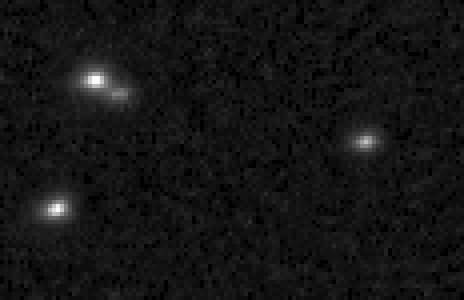
| GRAVITATIONAL LENSES |
Having had an interest in Astronomy since childhood, which contributed to my interest in theoretical physics, I am fascinated to discover to what extent modern small telescopes can capture images of gravitational lenses, which were predicted by Einstein's Theory of General Relativity.
Here is an image of gravitational lens HE1104-1805 photographed with a Meade 10 inch telescope at prime focus with an SBIG ST10 CCD imager and SBIG AO7 adaptive optics device. The composite exposure time is 20 minutes and the image has been deconvolved. The gravitational lensed star is towards the top left of the image. The two areas of light are two images of the same star that have been lensed by a massive galaxy between the star and my telescope. The angular separation between the images is only about 3 arc seconds and the magnitude of the fainter image is about 18. The star in the images is actually a quasar. The light from the quasar had been travelling about 12 billion years when it reached my telescope, which means that we are looking back around 89% of the age of the universe. The other two areas of light in the lower part of the image are ordinary stars.
